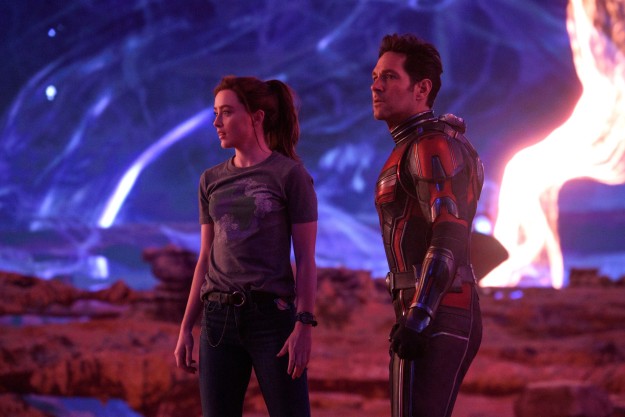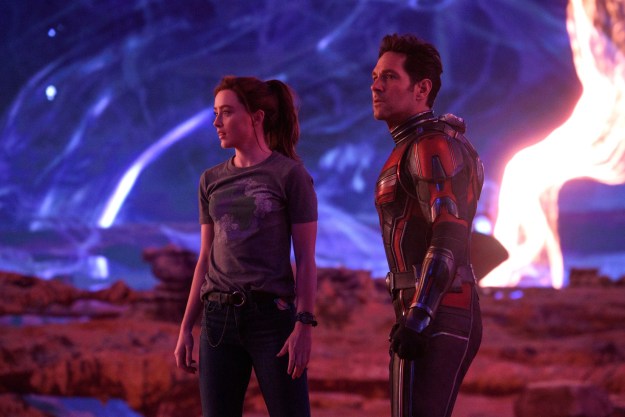
- Expands the MCU in big ways
- Lots of humor that lands well
- Jonathan Majors is captivating
- Story and cast spread too thin at times
- Emotional beats fall flat
- Supporting cast feels underused
From Doctor Strange in the Multiverse of Madness to Ant-Man and the Wasp: Quantumania, Marvel Studios is squeezing a lot into its movie titles lately. It’s a trend that’s a headache for anyone professionally obligated to write about these films on a regular basis, certainly, but it makes sense as the studio attempts to expand its cinematic universe with each film.
Title complaints aside, Ant-Man and the Wasp: Quantumania opens up another new, wonderfully weird avenue for adventures in the MCU, but the film’s ambition occasionally outpaces an otherwise fun cast and the intriguing concepts it teases.

Small heroes face a big threat
Directed by Peyton Reed from a script by Jeff Loveness, Ant-Man and the Wasp: Quantumania brings back most of the core Ant-Man franchise cast for a story that sends the whole group of size-changing, insect-themed heroes into a weird, subatomic universe to battle a powerful villain attempting to escape exile.
Paul Rudd returns as the titular Ant-Man, Scott Lang, alongside Evangeline Lilly as scientist Hope van Dyne, aka the Wasp. They’re joined by Michael Douglas and Michelle Pfeiffer as Hank Pym and Janet van Dyne, respectively, the original Ant-Man and Wasp, as well as Kathryn Newton (Freaky) as Cassie Lang, Scott’s daughter.
Quantumania pits the returning Ant-Man heroes against Kang, a time- and space-traveling conqueror played by Jonathan Majors (Lovecraft Country). The character is an alternate version of the character Majors portrayed in Marvel’s Loki series — dubbed “He Who Remains” — and one of many variants of the character he’s expected to play across multiple, upcoming Marvel films.
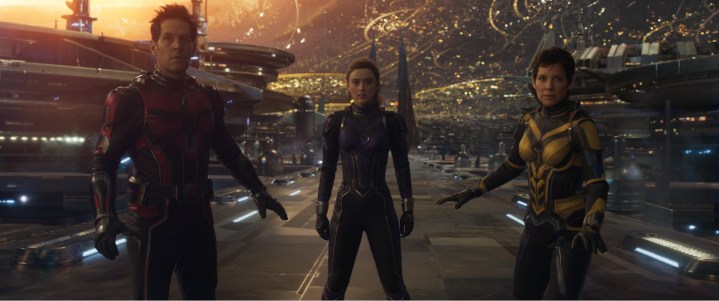
Marvel gets weird
What Quantumania might lack in cohesive story, it makes up for with sheer scope.
Like the aforementioned Multiverse of Madness, as well as Spider-Man: No Way Home and the last few Thor films, Quantumania feels like a broad, universe-expanding chapter of the MCU, introducing a new, narrative sandbox for Marvel’s characters to play in. Where Multiverse of Madness and No Way Home opened the door to alternate dimensions and Thor extended the cosmic reach of the MCU, Quantumania goes in the opposite direction by going small with the Quantum Realm, a microscopic universe that exists beyond the typical limits of our perception.
Marvel and Reed populate the Quantum Realm with a colorful assembly of weird, surreal creatures and landscapes, from sentient buildings and talking broccoli to massive, amoeba-like entities that inhabitants ride around various regions that range from broad deserts and lush, neon-hued jungles to crowded, sci-fi cityscapes. It’s the most trippy environment we’ve seen so far in the MCU — which is saying a lot, given how strange Multiverse of Madness was willing to get — and blends the bright, comic-book palette of Marvel’s movieverse with the bizarre, physics-defying weirdness of an Alejandro Jodorowsky fever dream.
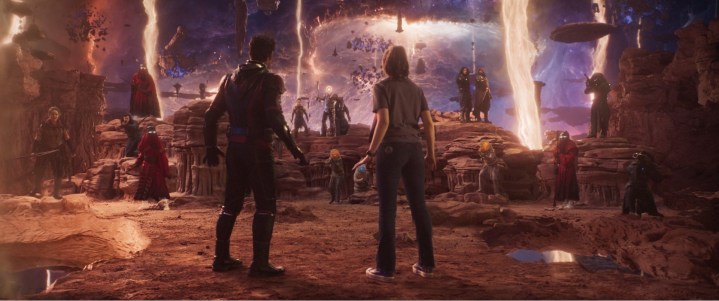
What works well in Quantumania
No matter how weird things get, though, the cast of Quantumania seems comfortable with the roles they play in the adventure.
Douglas and Pfeiffer are as reliably entertaining as ever, even amid the green-screen spectacle of it all, and have a great chemistry with each other and the rest of the cast. Their roles play to their strengths, and the same can be said of the parts Rudd, Lilly, and Newton play in the film. The Ant-Man family feels like a family, and Quantumania establishes them as the sort of close-knit superhero team Marvel fans typically associate with the Fantastic Four, as they share a bond that goes beyond being mere teammates.
Rudd delivers the sort of charming, never-too-serious performance audiences have come to expect from his MCU character (and most of his roles), and even in a cast filled with A-listers, he’s the most entertaining element of any scene he’s in. Marvel has smartly turned Ant-Man into an average Joe hero, and Rudd is the perfect actor to convey the character’s wide-eyed view of a world filled with larger-than-life heroes and villains.
On the flip side, Majors is just as perfectly cast as the sinister Kang, whose quietly calm, methodical approach to his sinister ambitions makes him exponentially more scary, while also making the rare moments when he does let loose feel truly terrifying. Kang is a cold-blooded conqueror in the MCU, and Majors finds just the right balance in his performance to sell his devastating potential — even in a world protected by Thor, Doctor Strange, and Hulk.
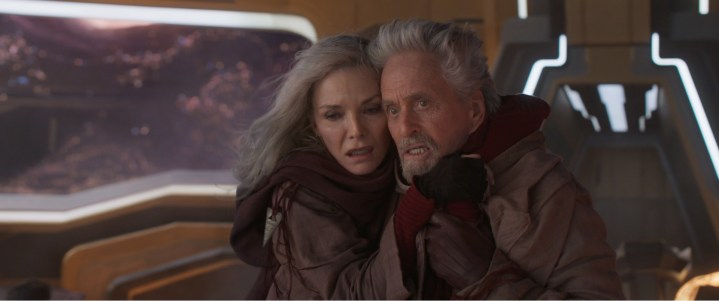
Quantum entanglement
Still, there’s plenty about Ant-Man and the Wasp: Quantumania that doesn’t come together as well as the film’s casting choices.
With so much narrative ground to cover, Quantumania delivers some of its most interesting new characters and concepts in frustratingly small portions, teasing the audience with intriguing plot points that never pay off and fresh, fascinating characters that ultimately get left on the side of the road as the main story hurtles along without them. An underused, telepathic character played by William Jackson Harper is one of the most egregious examples of this, and it occasionally feels like Quantumania is more interested in creating new characters than building stories around them.
That frantic pace also does a disservice to the story’s emotional beats, which never manage to strike a chord before the plot barrels along. That speedy path through the narrative works fine with the film’s snappy style of humor, but the action never pauses long enough to let the emotional toll of events set in with either the characters or the audience.

Ant-Man and the Wasp: Quantumania is good enough
While Ant-Man and the Wasp: Quantumania never quite rises to the same level as the MCU’s best films to date, it still does enough to keep it out of the bottom tier of Marvel movies — which is a thoroughly entertaining batch of films regardless.
Rudd’s performance and the super-family vibe of the heroes’ adventure sets Quantumania apart from other MCU films, and Majors’ chilling portrayal of Kang kicks the entire project up a notch. It’s neither as funny as Thor: Ragnarok (or even prior Ant-Man films), nor as epic as most of the Captain America films, but Quantumania is up there with Multiverse of Madness among the weirdest Marvel movies to date.
That’s certainly something, even if the story isn’t able to blend all that weirdness into something more coherent.
Ant-Man and the Wasp: Quantumania is in theaters now.
Editors’ Recommendations
Services Marketplace – Listings, Bookings & Reviews
